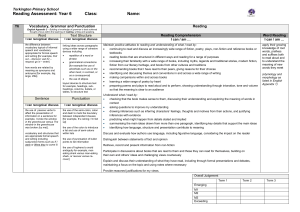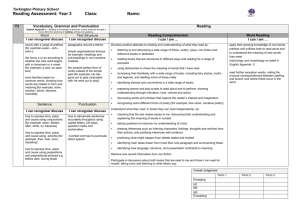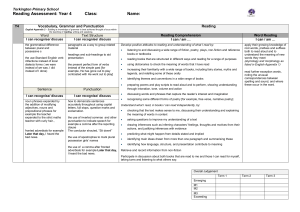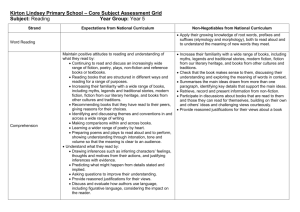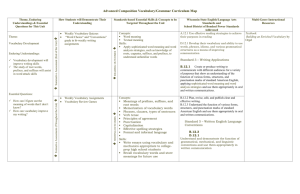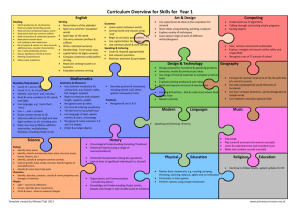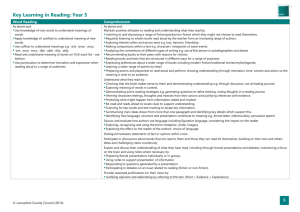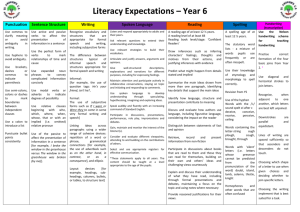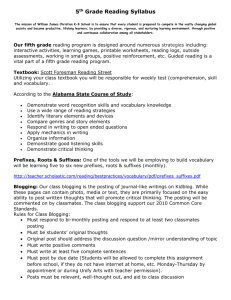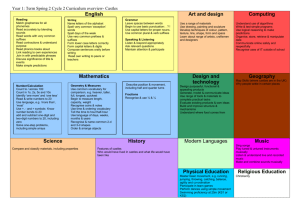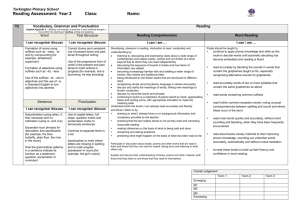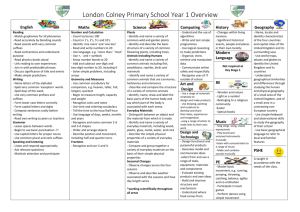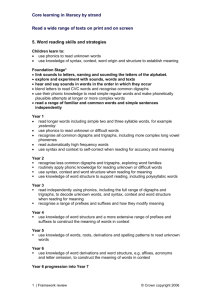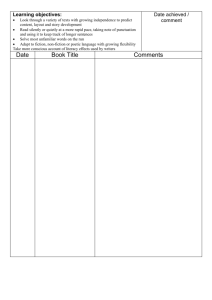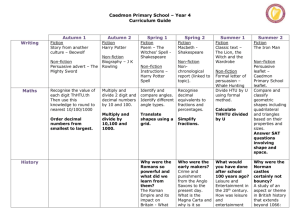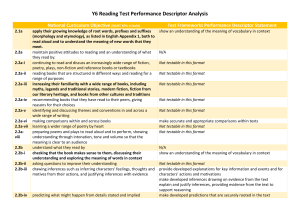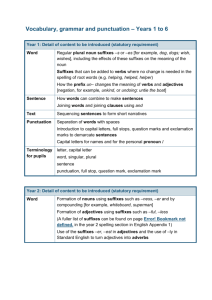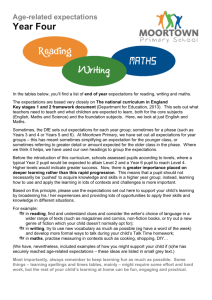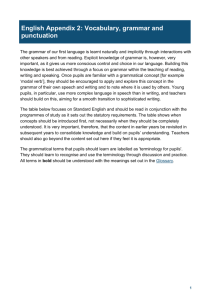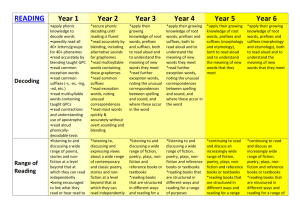Year 5 Reading
advertisement
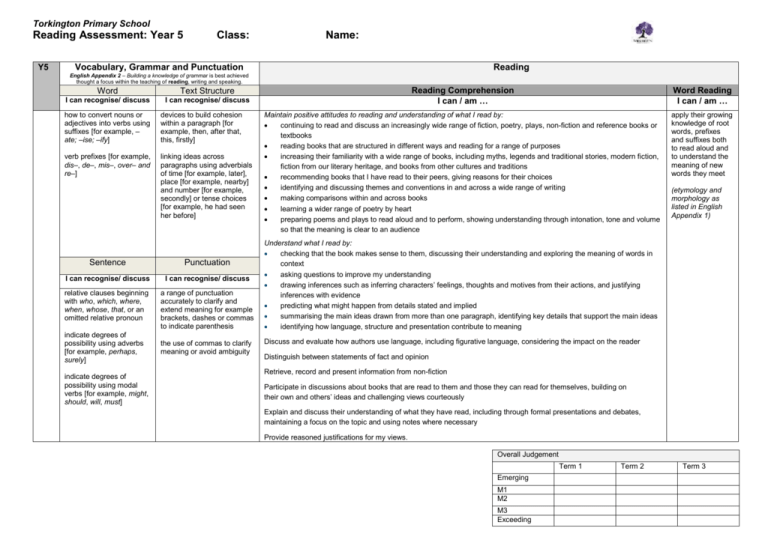
Torkington Primary School Reading Assessment: Year 5 Y5 Class: Name: Vocabulary, Grammar and Punctuation Reading English Appendix 2 – Building a knowledge of grammar is best achieved thought a focus within the teaching of reading, writing and speaking. Word Text Structure I can recognise/ discuss I can recognise/ discuss how to convert nouns or adjectives into verbs using suffixes [for example, – ate; –ise; –ify] devices to build cohesion within a paragraph [for example, then, after that, this, firstly] verb prefixes [for example, dis–, de–, mis–, over– and re–] linking ideas across paragraphs using adverbials of time [for example, later], place [for example, nearby] and number [for example, secondly] or tense choices [for example, he had seen her before] Sentence Punctuation I can recognise/ discuss I can recognise/ discuss relative clauses beginning with who, which, where, when, whose, that, or an omitted relative pronoun a range of punctuation accurately to clarify and extend meaning for example brackets, dashes or commas to indicate parenthesis indicate degrees of possibility using adverbs [for example, perhaps, surely] indicate degrees of possibility using modal verbs [for example, might, should, will, must] the use of commas to clarify meaning or avoid ambiguity Reading Comprehension I can / am … Word Reading I can / am … Maintain positive attitudes to reading and understanding of what I read by: continuing to read and discuss an increasingly wide range of fiction, poetry, plays, non-fiction and reference books or textbooks reading books that are structured in different ways and reading for a range of purposes increasing their familiarity with a wide range of books, including myths, legends and traditional stories, modern fiction, fiction from our literary heritage, and books from other cultures and traditions recommending books that I have read to their peers, giving reasons for their choices identifying and discussing themes and conventions in and across a wide range of writing making comparisons within and across books learning a wider range of poetry by heart preparing poems and plays to read aloud and to perform, showing understanding through intonation, tone and volume so that the meaning is clear to an audience apply their growing knowledge of root words, prefixes and suffixes both to read aloud and to understand the meaning of new words they meet (etymology and morphology as listed in English Appendix 1) Understand what I read by: checking that the book makes sense to them, discussing their understanding and exploring the meaning of words in context asking questions to improve my understanding drawing inferences such as inferring characters’ feelings, thoughts and motives from their actions, and justifying inferences with evidence predicting what might happen from details stated and implied summarising the main ideas drawn from more than one paragraph, identifying key details that support the main ideas identifying how language, structure and presentation contribute to meaning Discuss and evaluate how authors use language, including figurative language, considering the impact on the reader Distinguish between statements of fact and opinion Retrieve, record and present information from non-fiction Participate in discussions about books that are read to them and those they can read for themselves, building on their own and others’ ideas and challenging views courteously Explain and discuss their understanding of what they have read, including through formal presentations and debates, maintaining a focus on the topic and using notes where necessary Provide reasoned justifications for my views. Overall Judgement Term 1 Emerging M1 M2 M3 Exceeding Term 2 Term 3
